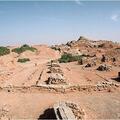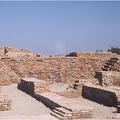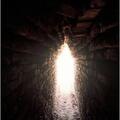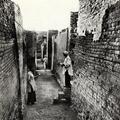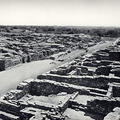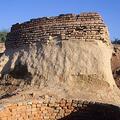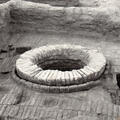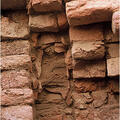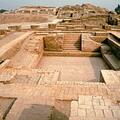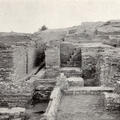Mystery of the Pillared Hall
What was the large pillared hall at Mohenjo-daro used for? The hall was approximately 27.5 meters square (90 feet square) with twenty square brick pillars arranged in four rows, only two of which are still preserved. Strips of paved floors sloped from south to north and each strip of flooring had row of bricks set on edge along both sides. The cross wall in the foreground was built later and divided the hall into smaller rooms. Its purpose remains an enigma.

